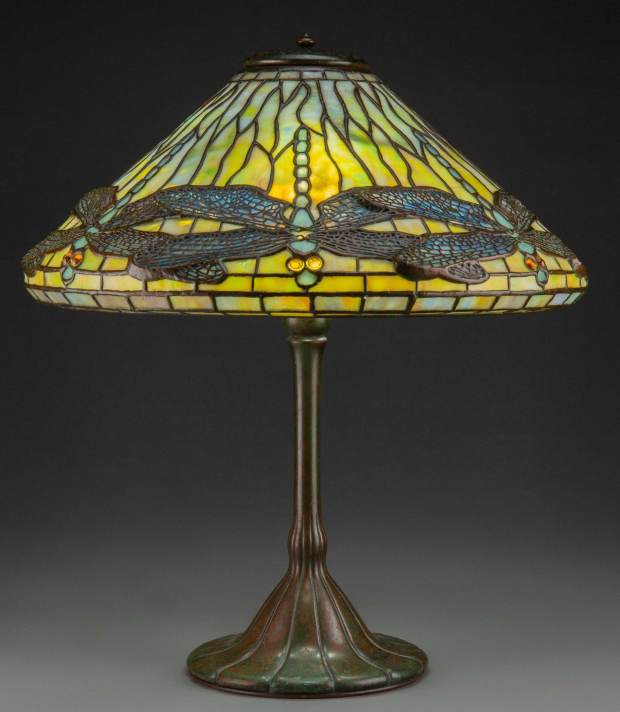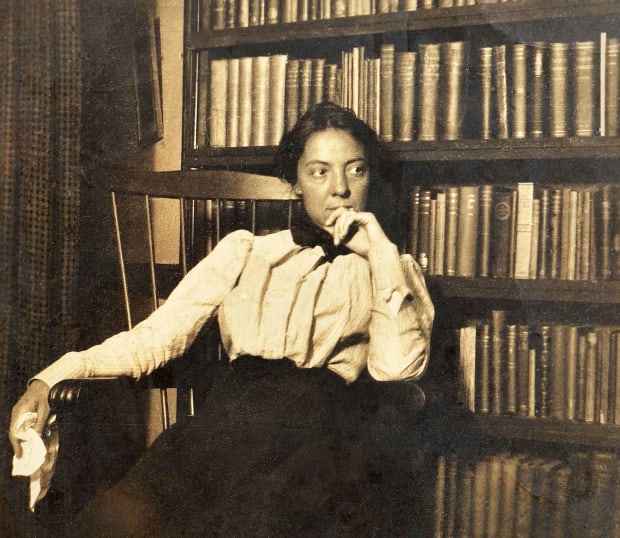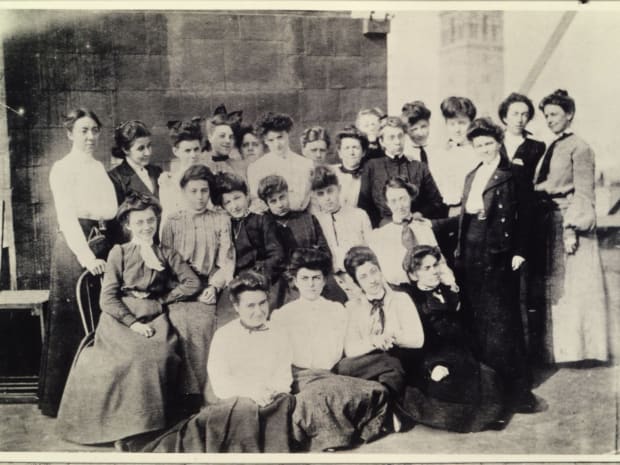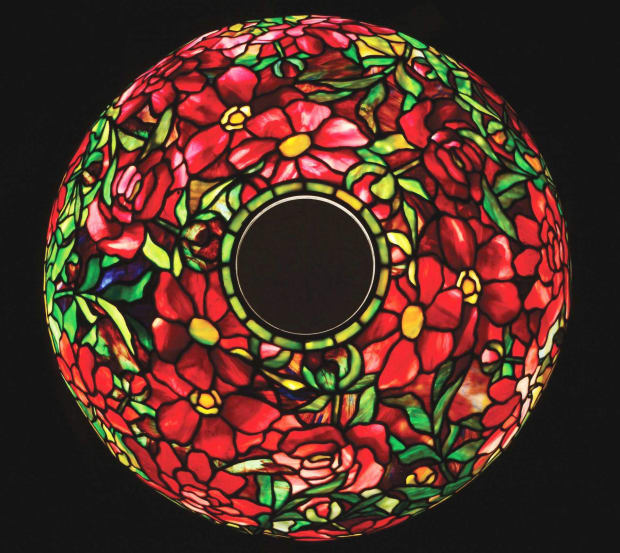Clara Driscoll, the nearly invisible design force behind many of Tiffany Studio’s finest stained-glass lamps, overcame staggering obstacles to illuminate the artistic talents of women hidden in the shadows of early 20th-century America.
The irony of Clara Driscoll’s life is not unnoticed
Chances are, you don’t know Driscoll. That’s understandable. Even at the height of her inventive and artistic career she was relatively unknown. We’ll get to that, but first this:
At the turn of the 20th century the world was changing dramatically. Many in urban areas were experiencing the wonders of electricity on a grand scale, literally seeing the (electric) light for the first time. It was a miraculous era, especially if you had money, as Louis Comfort Tiffany did.
Tiffany, the son of Charles Lewis Tiffany, the founder of Tiffany jewelry, was born into great wealth. To his credit, Tiffany was a gifted and talented artist. His name is synonymous with, among other things, exquisite, high-end stained glass, thanks in no small part to the luxury of good timing.

Image courtesy Heritage Auctions
Nearing the end of the 19th century, as electricity illuminated endless possibilities, the humble lamp took on new significance. It was no longer simply utilitarian, a means in which to light a room. Decorative lamps favored by the wealthy, and featuring Tiffany’s brilliant stained glass, became focal points for rooms in homes found in the swankiest of neighborhoods, streets Tiffany moved about comfortably.
In a far different neighborhood lived Clara Driscoll, the nearly invisible force behind many of Tiffany’s finest lamps. Driscoll didn’t enjoy Tiffany’s advantages. Her father died when she was 12, leaving her mother to raise her and her three sisters in a small town 40 miles south of Cleveland.

Courtesy of Linda D. Alexander and David Fenn
But she did have something rare for women at the time: a family that encouraged education. Clara had a gift for art and attended design school in Cleveland, working for a local furniture maker before moving to New York. There she enrolled in the new Metropolitan Museum Art School. Shortly afterward, Tiffany Studios scooped her up.
By 1894, Driscoll managed the Women’s Glass Cutting Department at Tiffany Studios, a staff of about 35 women. Tiffany decorative lamps are stunning pieces of art, but lampshade construction is a painstakingly difficult task, with each small section of glass carefully selected from the thousands of sheets available to the men and women in the cutting departments. Some designs featured as many as 2,000 individual pieces of glass.
Driscoll and her so-called “Tiffany Girls” thrived.

The Charles Hosmer Morse Museum of Art
Of course, Driscoll was more than the supervisor of a team of talented women. Working in the shadows of the luminescent Tiffany, she was a hidden creative force designing more than 30 Tiffany lamps – many originally attributed to Tiffany’s staff of male designers. It was Driscoll and her “girls” and not Tiffany and his large staff of male designers who were responsible for some of the studio’s most prized and valuable lamps, among them the Wisteria, Dragonfly, Peony, and from all accounts her first – the Daffodil lamp.
Driscoll had a close relationship with Tiffany, who championed her work within the firm, much to the chagrin of her male peers who threatened to strike in 1903 in an unsuccessful attempt to overturn the influence of her department.
By all rights, none of this would ever have been known. You see, Tiffany never disclosed the names of his designers, preferring to keep the public focus on his own considerable artistic and business talents. Any light that shined would certainly reflect his own brilliance.

Image courtesy Heritage Auctions
Driscoll remarried in 1909. Her first marriage ended abruptly with the death of her husband. After about twenty years, her career with Tiffany Studios ended just as suddenly. In keeping with the conventions of the time, married women could not be employed at the studio.
All of what we know of Driscoll would have been lost in the dark recesses of history if not for the fact that she and her family were prodigious letter writers. Decades after her death in 1944, just shy of her 83rd birthday, scholars unearthed those family letters and – much like her own “Tiffany Girls” – arduously pieced together Driscoll’s story.
Today, books have been published about her life and her work has been showcased in acclaimed exhibitions. Credit long overdue has finally been given.
When pondering the very real challenges faced by women – whether artists or not – take a moment to consider Clara Driscoll. At the turn of the 20th century, electricity changed the great urban landscape. It took but another century for us to finally shine a light on her.









